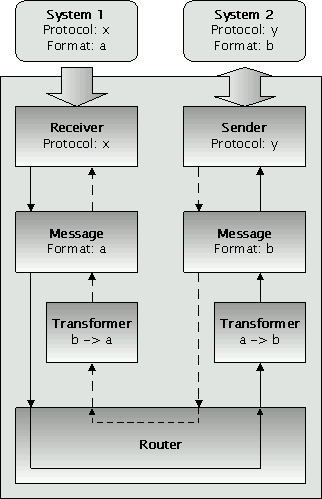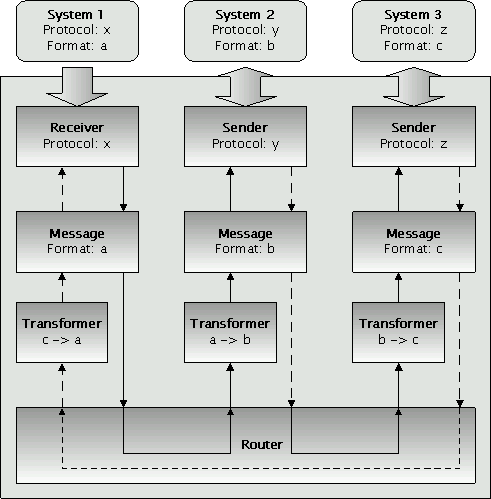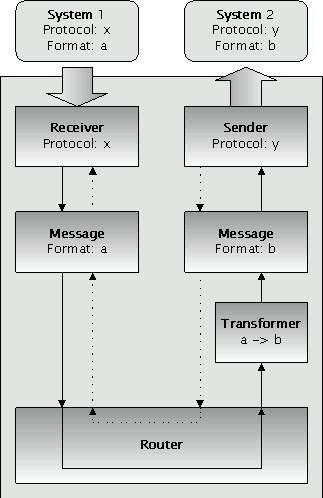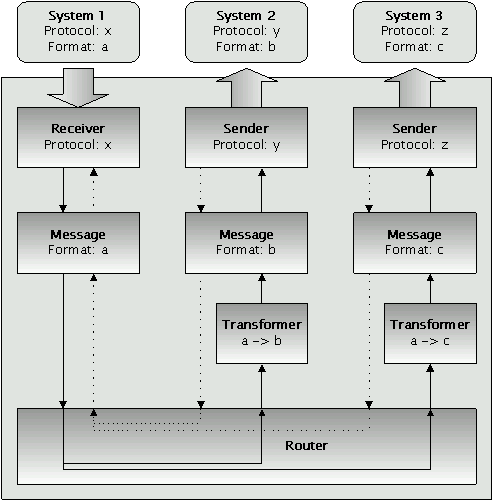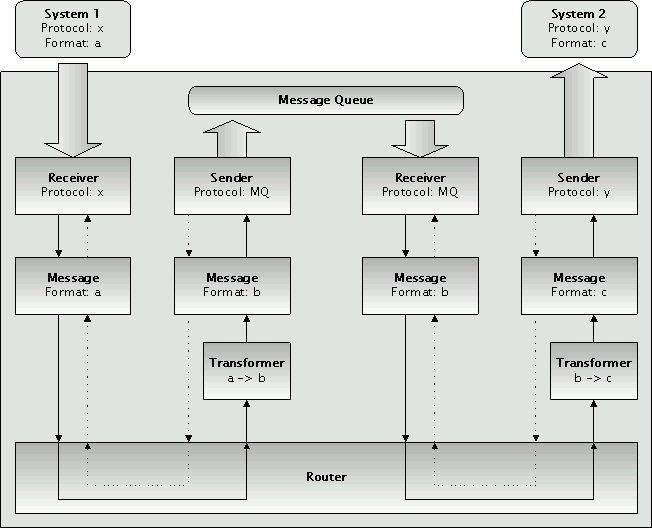This example shows, how to mix both communication modes.
Similar to the previous examples, system 1 sends a request to the xBus, which is routed to
system 2 in invocation mode. The response from system 2 is used as a
request to call system 3 in distribution mode. Finally the acknowledgment from
system 3 is given back to system 1.
In this case you can have up to two transformations, if all three systems have different data
formats:
- The request of system 1 (format a) must be transformed to format b as a
request for system 2.
- The response of system2 (format b) must be transformed to format c as a
request for system 3.
Long chains with more invocations and distributions to several systems can be built.
However, one limitation is important: When mixing both communication modes, all invocations
have to be processed prior to the distributions. Mixtures with alternating
invocations and distributions are not allowed.
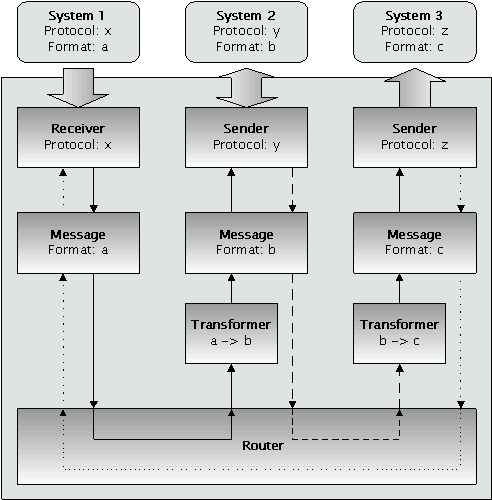
legend


